Intro
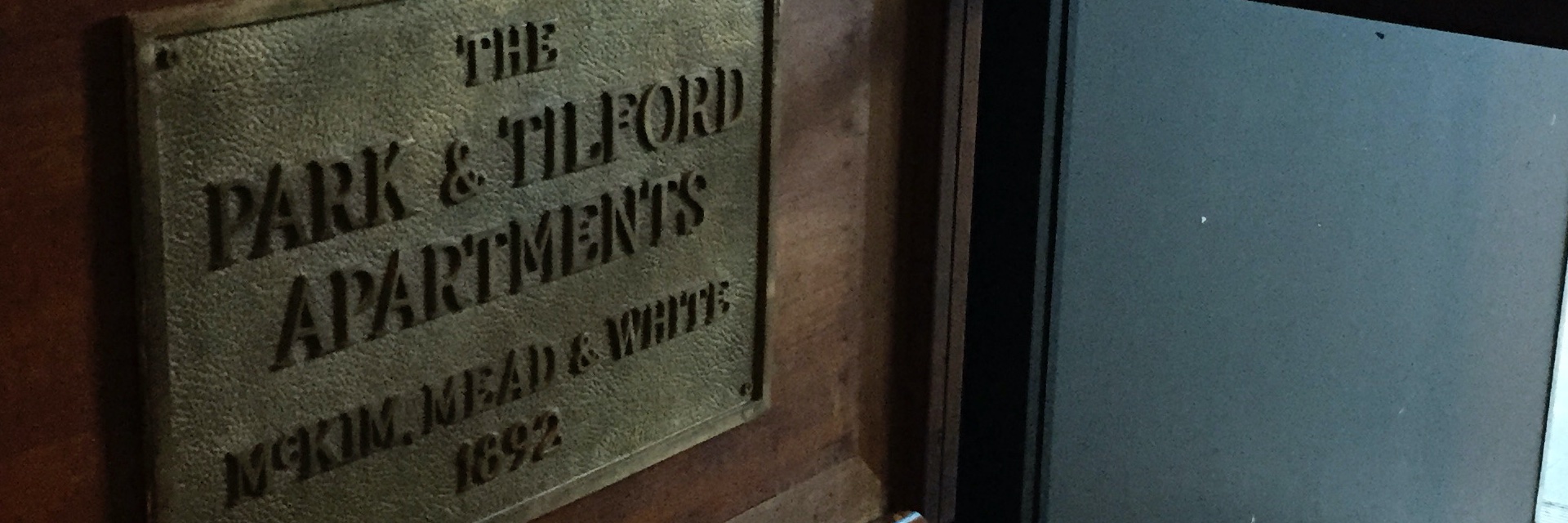
A handsome six-story, 19th-century building on a prominent Upper West Side site, 100 West 72nd Street was built by McKim, Meade & White for Park & Tilford Company as a luxury grocery store in 1892, and was converted to at 35-unit cooperative in 1972.
"There is no business building more handsome on the West Side,” wrote The New York Times upon its opening.
The Renaissance Revival-style building has rusticated masonry upper floors with three terracotta bands and a neo-Classical frieze beneath its cornice.
A full-time superintendent is on staff, and amenities include a central laundry room, video intercom, and elevator. Pets, pied-a-terres, co-purchasing, and guarantors are allowed.
Close
Origins
In 1835 John M. Tilford, then 20 years old, left the family farm and came to New York City where he obtained a job as a grocery store clerk. After saving his wages, he joined another clerk, Joseph Park, in 1840 to form "in a small way," as described by Men of the Century in 1896, to form Park & Tilford. The little store on Carmine Street was the seed of what would be New York City's finest grocery retailer.
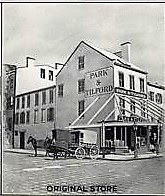 The Carmine Street store was in a converted Federal-style house. King's Views of New York (copyright expired)
The Carmine Street store was in a converted Federal-style house. King's Views of New York (copyright expired)
By 1886 Park & Tilford had four New York stores as well as a branch in Paris (used mainly for merchandising and exporting). The term "grocery" had little to do with the word we commonly use today. Park & Tilford catered to the carriage trade and stocked a dizzying array of goods — wines, confectioneries, gourmet foods and delicacies, cigars, and personal items. The New York Times deemed Park & Tilford "The very beau ideal of what a first class grocery store should be."
Following John Tilford's death in January 1891, his son, Frank, was elected to succeed him. A year later he recognized the developing Upper West Side as a prime location for yet another store. In March 1892 the firm purchased the one-story business building at the southwest corner of Columbus Avenue and 72nd Street. The Real Estate Record & Builders' Guide reported "Park & Tilford will shortly commence the erection of the fire-proof building...to be used entirely for their business."
McKim, Mead & White received the commission to design the new structure. The firm filed plans on April 22 for a "six-story brick, stone and terra cotta building" to cost $85.000 (more than $2.25 million today).
The Renaissance Revival style building was completed in September 1892. Vast show windows at street level sat between heavy granite piers that supported an entablature announcing the store's name. The entrance was flanked by fluted Scamozzi columns and embellished with a large circular window embraced by elaborate carving.
The rusticated, brick-faced upper floors were divided into three sections by wide terra cotta bands. Early photographs show the terra cotta picked out in vividly contrasting colors. A neo-Classical frieze ran below the pointy, crown-like pressed metal cornice.
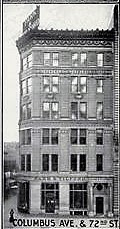 King's Photographic Views of New York 1911 (copyright expired)
King's Photographic Views of New York 1911 (copyright expired)
The New York Times remarked "The building was erected for west side partronage, and it is the firm's intention to make it an establishment of which the people of the west side may well be proud. Their reputation for dealing only in reliable and first-class groceries has already won for them a warm welcome and a generous number of customers."
From the June 20, 2017 entry of Tom Miller's blog,
Daytonian in Manhattan.
Close
Early Days
The building opened on September 23, 1892 and, according to the Times, "was attended by hundreds, who admired the building and the artistic display of goods." The article added "There is no business building more handsome on the west side" and the New-York Tribune called it "a decided architectural ornament to the neighborhood."
The Tribune noted that the "best class of trade" on the Upper West Side had "suffered much inconvenience by being obliged to order their groceries and household provisions from down-town houses." They could now rest easy. "This inconvenience will be no longer felt, for the new store of Park & Tilford...is as complete and perfect in every detail as the most exacting buyers can demand."
Park & Tilford's vast array of merchandise was hinted at in the Tribune's reporting that the new store "is completely stocked with the best quality of standard articles, including a most desirable and extensive assortment of superior perfumery and toilet requisites." The newspaper said "The ground floor of the building has been decorated and stocked in such a manner that it is no exaggeration to say that it is a work of art."
Frank Tilford was apparently pleased with the location, for he almost immediately began construction of his mansion across the street from the store. The Real Estate Record called it "palatial" in December 1895. And The Heroes of the American Revolution and Their Descendants, described it as "one of the handsomest edifices in that particularly handsome part of the city."
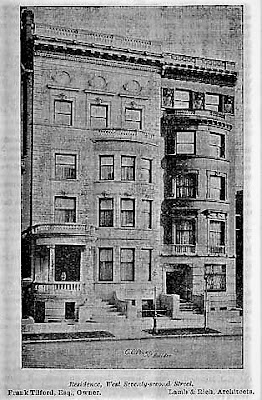 At No. 119 W. 72nd St, Tilford's home was almost directly across 72nd Street from the store. Real Estate Record & Guide, Dec 1895 (copyright expired)
At No. 119 W. 72nd St, Tilford's home was almost directly across 72nd Street from the store. Real Estate Record & Guide, Dec 1895 (copyright expired)
Below the Park & Tilford store were a basement and sub-basement. Here behind-the-scenes work went on, like the candy-making shop. In July 1909 the Cold Storage and Ice Trade Journal reported that the firm had improved its "candy factory" with a "10-ton Vesterdahl direct expansion refrigeration machine." The up-to-the-minute addition would have nearly-deadly consequences later.
On the afternoon of December 17, 1916 six men working in the sub-cellar discovered a fire and pulled the alarm; but before they could reach the exits an ammonia tank to the refrigeration system exploded.
The New-York Tribune reported "All managed to crawl to the stairs or elevators before collapsing. They were found by volunteers among their fellow employes and dragged to the street."
As fire fighters responded, more ammonia tanks exploded. The first group of seven reached the sub-cellar with a line of hose, and then tried to retreat. "All dropped before reaching the elevator," said the article. A second wave, from Hook & Ladder 40, headed towards the fire and came across them. But, "by the time they were hauled to the street most of their rescuers were overcome."
Fire fighters worked in shifts, covering their faces with wet towels — half fighting the fire and the other half pulling stricken firemen to the street. Deputy Chief Burns finally refused to allow any more men to enter the building. It was new fire-fighting technology that saved the building. "Captain McElligott and his oxygen helmeted men worked their way into the smoke and fumes filled cellar with a line of hose, but it was a half hour before they had cleared the air sufficiently to permit the other firemen to enter."
In the meantime, the Tribune praised Park & Tilford's emergency preparation and the discipline of the employees. "Almost 300 employes of Park & Tilford, scattered over six floors, gave an excellent demonstration of the fire drill system. Summoned by a series of signals, the employes, most of them women, formed in line and marched through the smoke and fumes without disorder to the street."
From the June 20, 2017 entry of Tom Miller's blog,
Daytonian in Manhattan.
Close
Today
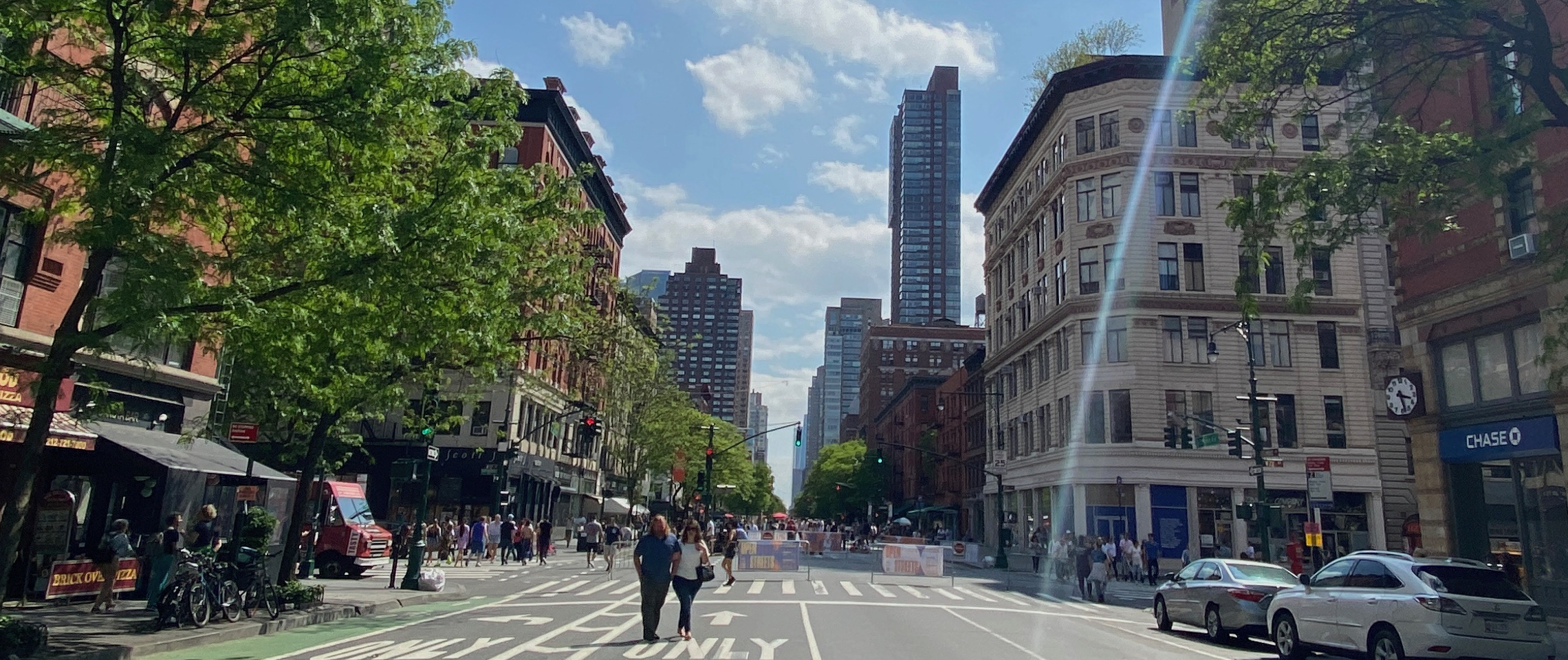
Park & Tilford sold the building in 1920. In 1925 architect Bernard Hersbrun was hired to renovated it to what became known as the Papae Building. There was now a bowling alley in the basement, stores on the first floor, and offices and meeting rooms above.
The meeting rooms were routinely leased by clubs and union groups. In December 1932, for instance, the election of officers of the Boston Terrier Club of New York was held here; and the following July the New York State Association or Retail Meat Dealers met to discuss a 48-hour work week and minimum wages.
On February 13, 1934, two months after Prohibition was repealed, The New York Times reported that the Retail Druggists Association of New York and the Pharmacy Owners Association had met in the Papae Building. Surprisingly today, the reason for the meeting was to compose a letter to Governor Herbert Lehman "with a plea that he permit the sale of liquor in the drug stores." The group, representing 5,000 pharmacies, said they were in "imminent peril" unless "drug stores were permitted to sell alcoholic beverages under the same license system that now governs the liquor dealers."
Considering all the union meetings being held in the building, it was not surprising that Cafeteria Local Union 460 of the I. W. W. leased an office in 1933. What was surprising was that the "union" had only one member, 22-year old Arthur Fried.
The artful con artist studied up on labor unions in the library, printed letterheads and rented the office. Then, according to police in January 1934, "he called on cafeteria owners, commanded them to pay their help 'union' rates and when they refused, hired sandwich men at $1 a day to picket their places." For a $25 payment Fried would call off the business-deflating picketers.
Fried's scheme actually worked. Until Nathan Brandwine called the police. It was the end of the one-man Cafeteria Local Union 460. Fried was arrested and charged with attempted extortion.
The Socialists of the Seventh and Ninth Assembly Districts held its meetings in the Papae Building in the early 1930s. But a far different type of assemblage drew police attention in the spring of 1935.
To gain entrance to a large, private space on the sixth floor, a visitor needed an admission card. One was obtained by a plainclothes patrolman in March, and he was shocked by what he uncovered. At 10:45 on the night of March 12 the place was raided. The audience, the management and the performers — 150 people in total — were arrested for "participating in or attending an indecent performance."
The New York Times explained "the performance consisted of indecent motion pictures, after which performers started an improper presentation." It required several back-and-forth trips by patrol wagons to transport the arrested throng. All but one of the girls performing were in their teens, the oldest being 20. Three of them, who were waiting to take part in the performance, escaped.
By the last quarter of the 20th century the neighborhood of Columbus Avenue and West 72nd Street had severely declined. But on October 28, 1973 Robert E. Tomasson, writing for The New York Times, called West 72nd Street "a major commercial thoroughfare that has undergone a marked rejuvenation in the last few years." Part of that rejuvenation was the 1972 renovation of the Park & Tilford building to apartments.
McKim, Mead & White's ground floor had been obliterated by now. Most passersby likely assume that the architecturally sympathetic fluted pilasters that today grace the storefront are original. The terra cotta now longer wears a colorful palette, and the exuberant cornice cresting was long ago lost. But the Park & Tilford building, where well-to-do shoppers browsed among champagne and imported French delicacies, still commands a dignified presence.
From the June 20, 2017 entry of Tom Miller's blog,
Daytonian in Manhattan.
Close
Contact
Close
Elements
Text
This is bold and this is strong. This is italic and this is emphasized.
This is superscript text and this is subscript text.
This is underlined and this is code: for (;;) { ... }. Finally, this is a link.
Heading Level 2
Heading Level 3
Heading Level 4
Heading Level 5
Heading Level 6
Blockquote
Fringilla nisl. Donec accumsan interdum nisi, quis tincidunt felis sagittis eget tempus euismod. Vestibulum ante ipsum primis in faucibus vestibulum. Blandit adipiscing eu felis iaculis volutpat ac adipiscing accumsan faucibus. Vestibulum ante ipsum primis in faucibus lorem ipsum dolor sit amet nullam adipiscing eu felis.
Preformatted
i = 0;
while (!deck.isInOrder()) {
print 'Iteration ' + i;
deck.shuffle();
i++;
}
print 'It took ' + i + ' iterations to sort the deck.';
Lists
Unordered
- Dolor pulvinar etiam.
- Sagittis adipiscing.
- Felis enim feugiat.
Alternate
- Dolor pulvinar etiam.
- Sagittis adipiscing.
- Felis enim feugiat.
Ordered
- Dolor pulvinar etiam.
- Etiam vel felis viverra.
- Felis enim feugiat.
- Dolor pulvinar etiam.
- Etiam vel felis lorem.
- Felis enim et feugiat.
Icons
Actions
Table
Default
| Name |
Description |
Price |
| Item One |
Ante turpis integer aliquet porttitor. |
29.99 |
| Item Two |
Vis ac commodo adipiscing arcu aliquet. |
19.99 |
| Item Three |
Morbi faucibus arcu accumsan lorem. |
29.99 |
| Item Four |
Vitae integer tempus condimentum. |
19.99 |
| Item Five |
Ante turpis integer aliquet porttitor. |
29.99 |
|
100.00 |
Alternate
| Name |
Description |
Price |
| Item One |
Ante turpis integer aliquet porttitor. |
29.99 |
| Item Two |
Vis ac commodo adipiscing arcu aliquet. |
19.99 |
| Item Three |
Morbi faucibus arcu accumsan lorem. |
29.99 |
| Item Four |
Vitae integer tempus condimentum. |
19.99 |
| Item Five |
Ante turpis integer aliquet porttitor. |
29.99 |
|
100.00 |
Close

 The Carmine Street store was in a converted Federal-style house. King's Views of New York (copyright expired)
The Carmine Street store was in a converted Federal-style house. King's Views of New York (copyright expired)
 King's Photographic Views of New York 1911 (copyright expired)
King's Photographic Views of New York 1911 (copyright expired) At No. 119 W. 72nd St, Tilford's home was almost directly across 72nd Street from the store. Real Estate Record & Guide, Dec 1895 (copyright expired)
At No. 119 W. 72nd St, Tilford's home was almost directly across 72nd Street from the store. Real Estate Record & Guide, Dec 1895 (copyright expired)